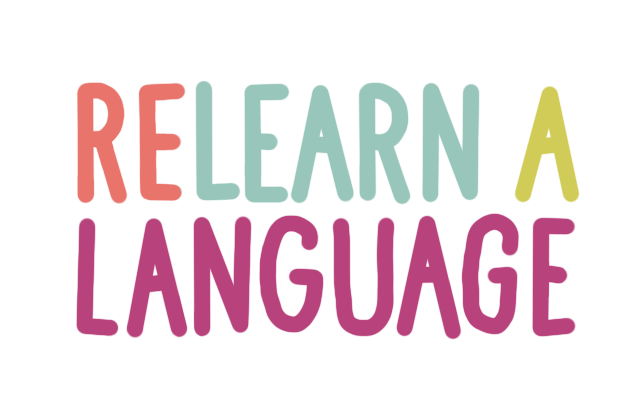Best way to learn Italian (on your own or in a group)

Researching the best ways to learn Italian is the single most important step you can take in your language learning journey.
So have confidence: you’re doing great so far!
That’s because learning Italian can be a life-changing experience filled with food, music, literature, and travel.
Or, it can be a few weeks of frustration before you quit.
But don’t worry: I’ve studied many languages, including Italian, as an adult.
And I don’t have a “special talent” for languages (I failed out of high school Spanish).
But thanks to a lot of trial and error, I’ve discovered the best ways to learn Italian on your own–and I’m happy to guide you so you don’t make the same mistakes.
FYI: some of the links in this blog post are affiliate links, meaning I may make a small commission on a product you choose to buy. These commissions do not impact which products I do or do not suggest.
1. Accept that there is no single best way to learn Italian
 What works for some people does not work for others. My mother, who has been studying Italian for several years, swears by community college classes and memorization. I personally love to hire private tutors and throw myself into speaking even when I don’t know a word!
What works for some people does not work for others. My mother, who has been studying Italian for several years, swears by community college classes and memorization. I personally love to hire private tutors and throw myself into speaking even when I don’t know a word!
What about you? Did you love grade school or hate it? Do you love to do DIY projects from YouTube, or need to see something written in a book?
For the rest of these steps, you’re going to trust your gut (and not me, anonymous polyglot on the internet) so you can learn to develop your own language learning instincts.
2. Find a vision goal to keep you motivated to learn Italian (even when you’re frustrated)
Learning Italian (or any language) is a long process–but it should be filled with optimism and beauty, not frustration!
Spanish is my strongest “second language”, and even after 3 years I still sometimes make mistakes when speaking or writing.
So how do I keep working on it when I’m frustrated? (And believe me, you will get frustrated.)
Vision goals!
Goal setting is key, but so are daydreams. I have Pinterest boards full of daydreams: me dancing in Colombia, me working with Spanish-speaking clients in the US, me trying new recipes in Madrid… whatever your vision is of how you will use Italian, it’s perfect.
I recommend making yourself a nice big Pinterest board full of images that represent why you want to learn Italian. It doesn’t matter if it’s visions of food, pictures of your grandmother, vacations, novels… it’s perfect.
Alternatively, you can journal about it in the same book where you might take your Italian notes (or do both).
This way, whenever you get too tired or frustrated to keep studying Italian, you can take a nice long daydream and remember why you started in the first place.
3. Set an Italian learning budget
You get what you pay for, but expensive doesn’t always mean good.
Before we even begin to talk about tools for learning Italian with, set a realistic budget for yourself so you can start planning intelligently.
Examples of language budgets
For very few people, a $0 budget might be all they can afford. I am personally currently learning German on a $0 budget as a challenge, and even though there are plenty of free tools online I’ve found it extremely frustrating.
Many good Italian apps have paywalls, and not being able to hire a private tutor can be discouraging.
Not even having money for a textbook? Not fun.
Unless you truly do not have the income to spare, I do not recommend a $0 budget.
A low budget for learning Italian would be $5-15 a week. This is enough to pay for a small app subscription every month (there are better apps than DuoLingo out there) and one or two additional language resources every month.
$15 a week is normally the lowest I budgeted for language learning and should be affordable for most Italian students.
A medium-budget would be $20 a week. This is enough to pay for occasional private classes every month, plus some books and resources as you go. I normally spend this much when language learning.
A high budget to learn Italian is $35 a week. This is enough for weekly private classes online, as well as additional resources like grammar books or apps. When I can afford it, this is how much I budget for a language learning project.
I personally think anything over $40 a week is too high. At times when I’ve spent that much on classes, I’ve found that I couldn’t keep up with how much my weekly professors expected of me AND use all of the resources I was buying at the same time. I did this for Catalan once for three months and, at the time of this writing, still haven’t been able to use all of those resources.
4. Find tools that get you speaking Italian soon

I make memes about language learning on Instagram as @MultilingualMarissa
There are endless tools online, but the most important thing is that you start speaking Italian soon.
“Gamified” apps like DuoLingo train you to choose Italian words from a word bank, not to speak Italian, and our brains simply aren’t wired to make a jump like that and suddenly start speaking one day.
Some of them include:
- Private online classes with iTalki
- If you want to take a class in a local college or institution, ask before you sign up about how much speaking you actually do in the class
- Textbooks where you’re writing your own sentences to practice as you go
- Applications like uTalk start you speaking from Day 1. I personally find them much better than gaming apps like Duolingo or Drops
Remember: not all resources are created equal. My suggestion is to google reviews of each thing listed here and see what you like the most. Just prepare yourself to experiment a little (more on that below).
However, I also have my own personally-recommended list of Italian language learning resources right here. Click the link and head over to the Italian section. (You’ll want to start at A1 if you’re an absolute beginner.)
5. Find an Italian tutor or language exchange partner
You can’t speak until you can speak!
Kind of paradoxical, I know.
Your first attempts to speak Italian will be clumsy and frustrating. It’s okay–so were mine.
But the best way to learn Italian is by producing Italian, whether that’s speaking or journaling.
Websites like iTalki and Tandem have sections where you can find speaking partners and trade 30min of your English for 30min of someone else’s Italian, and hashtags like #languageexchange or #studyingItalian on Instagram or Twitter can help you find other like-minded students to practice with.
I personally think finding patient tutors instead of exchange partners is a better use of my time. This way I can pay them with my money instead of my time but for people with lower budgets, these exchange practices are great.
6. Find ways to play with Italian as you learn
It’s not all just grammar you know!
I know we covered learning resources above… but what about the fun?

For me personally, one of the best ways to learn Italian (or any language) has been through short stories and audiobooks
Some of my favorite resources which help me learn the language even though I’m just having fun are:
- Music videos on YouTube for songs in my target language with lyrics
- Short story books or audiobooks in the language for learners
- Podcasts in the language for learners
- Meme pages on Instagram or Facebook with content in the target language
On days where I can’t bring myself to “really study”, I can normally still force myself to put on some fun music while driving or a beginner podcast while cooking.
This way I can maintain contact with the language and learn through immersion at home.
7. Experiment until you find your own best way to learn Italian

Especially if you’re looking for the best way to learn Italian on your own, you will have to experiment quite a bit.
Just because your first attempt doesn’t bear fruit doesn’t mean you can’t learn a language.
If you don’t like an app, cancel your subscription.
It’s ok if you don’t like a book, see if you can return it.
If you don’t have good energy with a professor, break it off with them. (I had to learn this one the hard way.)
Experiment, experiment, experiment!
Learning a language also means learning about a new part of yourself.
It’s okay to say “that strategy wasn’t right for me”. Because you’re not only going to be discovering all that Italian has to offer you, but discovering more about yourself as a learner.
My personal rule is that I try a new tool (like an app or textbook) for 30 days. If after the first month I hate it, I drop it and pick up something new.
But if after those 30 days I still like it, I’ll stick with it for another 2 months (if it’s an endless app that keeps adding more content) and then make another judgment. (Or, if it’s a textbook with an endpoint, just finish it.)
I’m constantly experimenting this way, but don’t spend too much money by buying everything in sight when I first start off.
Summary: Your personal best way to learn Italian
If you want to find the single best way to learn Italian, there’s no one road map.
But if you want to find your own best way to learn Italian, the steps are:
- Do plenty of research until you find tools you like
- Start speaking as quickly as possible
- Have fun with music, stories, Italian cookbooks, or films
- Experiment with a variety of learning techniques
- Ditch anything that doesn’t work
- And daydream!!
Finally, if you’re learning Italian as a heritage language, make sure you check out our YouTube channel or subscribe to our email list to get more free help and resources delivered to you regularly.
Have any other questions about the best way to learn Italian? Leave them in the comments below so I can take a look and potentially expand this article!


